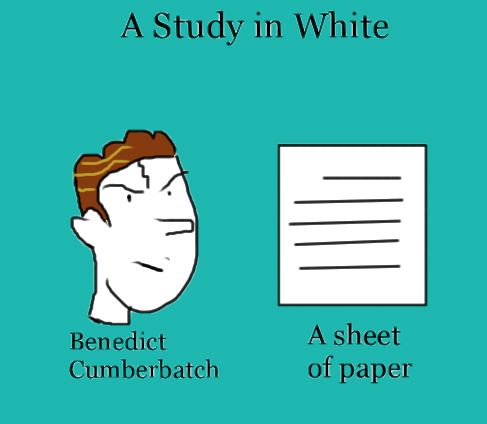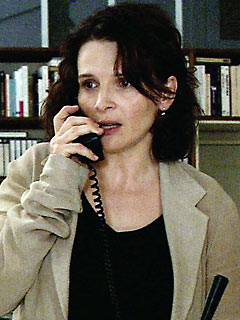As a child, I was convinced that documentaries were all boring – just the two-hour ramblings of 50-plus-year-olds. It took years before this notion was dispelled, and I am not entirely sure when I discovered that documentaries could be interesting. There is one thing I am sure of, though: I wasn’t the only one. I have heard complaints left and right that documentaries are dull, or, in a few instances, that “nobody else” seems to like them. Perhaps the public’s view of documentaries would be different if every moviegoer’s first documentary was as suspenseful as Claudine Bories and Patrice Chagnard’s Les arrivants (2009), with its first-hand look at immigrants’ trials to become French citizens; or as daring as Patric Jean’s La domination masculine (2009), which plunges into a real life penis enlargement surgery at the beginning of the film. Sadly, a large number of documentaries fail to stir up sympathy and caring the way these two films do. A documentary, even more so than films of other genres, needs to answer one question above all: “So what?” or “Why do I care?” And many documentaries fail to do so not because their subject matter is unimportant or lacks potential, but because they fail to maintain a sense of importance from scene to scene, or even from shot to shot.
There are several factors that contribute to this problem, many of which manifest themselves in two very different documentaries: Berlin, Symphony of a Great City, a 1927 silent film directed by Walter Ruttman, and Pour la suite du monde, a quite chatty film from 1963, directed by Michel Brault, Marcel Carrière, and Pierre Perrault. One may be silent while the other relies heavily on sound; and one may be set in a huge city while the other is set on a backwoods-y island off the coast of Canada. But they have several commonalities, all the same. Both of these films have incredible potential. The filmmakers for each managed to capture bucketfuls of gorgeous footage. Each film captures and preserves a culture and lifestyle that might otherwise be lost over time. And yet each one feels more like a bedtime story for an insomniac than a fascinating document of an old culture.

‘Berlin, Symphony of a [Sometimes Kinda Boring] City’
shows off the beautiful buildings, people, and animals that inhabit Germany’s lively capital city – a feat that should surely leave audience members wide-eyed with amazement at the visuals that the film presents.
Pour la suite du monde documents a small community on the island Ile-aux-Coudres as they struggle to revive a whaling tradition that died out when the town’s elders were but strapping lads in their teens and twenties. A promising premise indeed. Alas, the films fall far short of expectations. A large part of the films’ problems rest in their editors’ choices of how to arrange the footage. Shots that the editors would have quickly cut out or shortened if they had looked back and asked themselves a few simple questions.
First, a very important pair of questions: “Have I already shown this information in a previous shot?” If so, “Does this new shot add any insight that the previous shot didn’t?” The editors of Berlin, Symphony of a Great City clearly didn’t ask themselves these questions. They seemed fond of horses, for example, which is fair enough – horses are pretty great animals. But the film would every so often cut to a shot of horses simply standing there. Doing what? Oh, nothing much. With the horses doing nothing new or different, the audience has no reason to care about them anymore, even though they are pretty animals. Being pretty, unfortunately, cannot be their only saving grace in a film.
Pour la suite du monde has a similar problem with some of its footage. After much waiting, and then some more waiting, the members of the town finally catch a whale. As if the waiting wasn’t long and repetitive enough, the film now cuts between shots of the sea and shots of the old men saying how excited they are that they finally caught a whale – again – and again – and again. This leaves the audience asking, “Okay, you caught the whale. I understand that. So what now?”

It’s so exciting that we caught the whale! We mustn’t stop rambling now!
A related issue – which Pour la suite du monde particularly struggles with – is length of shots. As nice as it often is to have a long, uninterrupted take of a particular shot or scene, it is important for an editor to ask him or herself, “Why does this shot need to be the length it is? Does the extra length add any meaning? Or can the exact same message be conveyed if I spent less time on this shot?” It would seem that the editors of Pour la suite du monde couldn’t be bothered with this question. One shot in particular sticks out in my mind.
A group of the men are boating down the coast of the island, and the camera cuts to a point of view shot of the water as they travel across it. The shot continues… and continues… and continues… As I watched the film, I began to wonder if there was any point to the shot. It had only taken me a couple of seconds to take in and admire the seascape, as there was little to no change throughout the shot, save the motion of the camera. The scenery itself was uniform. No whales appeared to interrupt the monotony, and at that point nobody was really expecting that to happen. Nor were there were any apparent disasters with the traps that the townspeople had set. Finally, some of the townspeople began to talk about the traps. “Hey, a fish in the water, a fish in the sea! We only have about 3 miles of fishery to watch over. But we set the weir up here, miraculously!” At last, I understood why we stayed on this shot so long. It was a nice way to transition into the dialogue, which provided insights into how the island’s residents thought about the traps. But the editors could have easily lopped off a sizeable chunk from the beginning of that shot.

Footage of this trap takes up virtually half of ‘Pour la suite du monde’. Actually catching whales takes up about one eighth of it.
Some people might easily claim that this kind of technique – the long take that does not appear to give its audience any new information – is often used to build up suspense. Watch, for example, pretty much any episode of Buffy the Vampire Slayer and you have at least a 50-50 chance of seeing that tactic used effectively. And that may have worked for Pour la suite du monde – if there was any expectation that something surprising or exciting might happen.
Others may argue that staying on one image longer can effectively build a slower pace. This is true to an extent. I like to think of this tactic the way one might think of music. It’s all about timing. If you compose a piece of music, it’s perfectly acceptable to every so often have, say, a tuba play a whole note (a single note that lasts an entire measure, or four beats) instead of your more common, shorter half notes and quarter notes. But if you decided that the tuba should just keep playing that same note for several measures, without taking a breath and without any other instruments chiming in, your audience is likely going to get bored and, quite possibly, become slightly confused by this monotonous solo. In short, if a take is long and unvarying enough that the audience has time to question its importance, it’s probably too long.
Berlin, Symphony of a Great City, on the other hand, does not have an unreasonable number of ridiculously long takes, for which it deserves credit. However, some of its shots still feel too long despite the fact that they last only a few seconds each. Why? These shots, while pretty, contributed little to, and gained nothing from, being part of a film. Which leads us to our next question that editors must ask when putting a shot in a film: “What does this image gain from being in a motion picture? Would it loose any of its power or meaning if it were a still photograph?” Everybody who works on a film, especially its editors, must remind themselves that, in a way, their film will be holding its audience captive. Unlike in a photo gallery or museum, the viewers cannot simply look at an image for the amount of time they wish, and then move on when they are satisfied. Berlin has many images that are pretty or fun to look at – buildings, animals, a small car wedged goofily between two vehicles twice its size. But if viewers are simply watching pictures of horses doing nothing, or a cars standing still and silent next to each other, why are we sitting on our bums for over an hour in front of a screen? We could instead be walking around a gallery, stretching our legs, and enjoying equally pretty still photographs at our own leisure.

Images from one of the more exciting scenes in Berlin.
As gorgeous as it is, the 105-minute Symphony of a Great City could probably be whittled down to 15 minutes. Keep in the fast-paced montages and the small anecdotes that help the audience wake up and get excited – telephone operators struggling to answer masses of phones ringing off the hook; a police officer having to break up a street squabble; a speeding train, intercut with the exhilaratingly quick-paced shots of scenery zooming by and train wheels chugging. Keep some of the pretty shots to create more slowly paced moments – one or two shots of horses, a handful shots of Berlin’s beautiful buildings, some interesting shop windows, a few shots of the street traffic – but pick and choose only the best.
A print journalist must weed out even some of their favorite sentences from an article to meet word count, so that readers can enjoy the entire article and still have appetite, so to speak, for the rest of the day’s news. Similarly, filmmakers must let go of even some of their most precious shots to avoid making viewers feel like hostages to their film. A filmmaker, like a writer, must remember that, while his overall message may be important, his opinions on the smaller pieces that should make up the bigger picture can be strongly biased due to sentimentality and to his personal experiences while finding and capturing the information he wants. There are many questions a film editor can ask to help decide what to weed out, but they all boil down to one idea: will this capture the audience’s interest, and not just mine? Why would outsiders care about this moment? In other words, “So what?”










